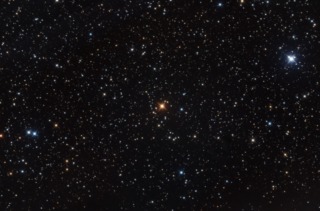
- Constellation: Canis Major
- Right Ascension: 07h 22m 58.32877s
- Declination: −25° 46′ 03.2355″
- Distance: 3,820 lly
- Apparent Magnitude: 6.5–9.6
VY Canis Majoris is a hyper giant star, one of the larger known stars. If this star was placed where our Sun was, it would extend out past Jupiter. The star is loosing mass due to its low surface gravity and extreme stellar wind, and is surrounded by a envelope caused by the mass loss. Due to its extreme size and mass, for a star, it will have a short lifetime and probably will go supernova within 100,000 years.
Annotated image follows.
- Details
- Category: Stars
Read more: VY Canis Majoris (2022)
- Telescope: GSO RC10
- Camera: ZWO 2600 MM
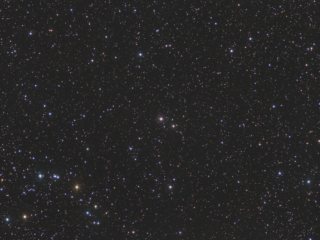
- Constellation: Perseus
- Right Ascension: 04 29 18.85
- Declination: +43 54 23.0
- Apparent Magnitude: 8.5 - 15
Discovered Nov 25, 2020, this time-lapse of Nova Per 2020 covering the period of Dec 8 - Mar 18. Images were taken about every two weeks weather permitting. Started with a brightness of mag 9, fading to mag 15.
- Details
- Category: Stars
- Telescope: Explore Scientific 127 Refractor
- Camera: ZWO 1600 MM
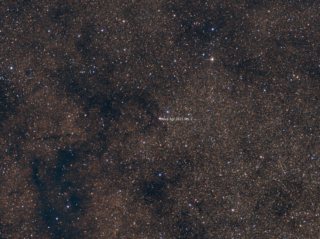
- Constellation: Sagittarius
- Right Ascension: 17h58m16.1s
- Declination: -29°14'57"
Quick capture of Nova Sgr 2021 No.2 (V6595 Sgr) from last night. Discovered on April 4th, currently around Mag 8.
- Details
- Category: Stars
- Telescope: Explore Scientific 127 Refractor
- Camera: ZWO 1600 MM

- Constellation: Corona Borealis
- Right Ascension: 15h 49m 31.31093s
- Declination: +39° 34′ 17.9111″
- Distance: 8815 ly
- Apparent Magnitude: 7.8 - 10
V Crb is a red giant Mira type carbon star located in Corona Borealis.
- Details
- Category: Stars
- Telescope: Explore Scientific 127 Refractor
- Camera: ZWO 1600 MM
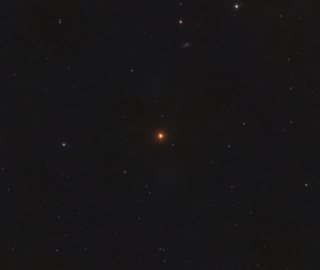
- Constellation: Virgo
- Right Ascension: 12h 25m 14.3952s
- Declination: +00° 46′ 10.9467″
- Distance: 2,300 ly
- Apparent Magnitude: 9.5 - 7.4
SS Vir is a Mira class variable star with a period of 361 days. It is also classified as a carbon star . Carbon stars are red giants that contain an excess of carbon in their upper layers forming sooty layer, scattering the blue/green light, giving them a deep reddish color.
- Details
- Category: Stars
- Telescope: Explore Scientific 127 Refractor
- Camera: ZWO 1600 MM
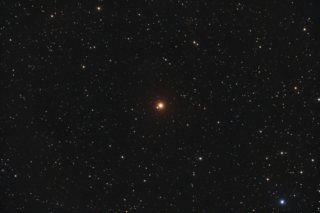
- Constellation: Cetus
- Right Ascension: 02h 19m 20.79210s
- Declination: –02° 58′ 39.4956″
- Distance: 300 ly
- Apparent Magnitude: 2.0 - 10.1
Mira or Omicron Ceti is a red giant star in Cetus. Prototype for a class of red giant variable stars that pulsate over periods of 100 to 1,000 days. Mira itself pulsates over 331.65 days going from a magnitude 2.0 down to 10.1. The star also undergoes a helium flash period about every 10,000 years. A white dwarf also is in orbit around Mira at 70 AU, and material lost from Mira is accreated by the white dwarf. Not massive enough to end in a black hole, it will eventually lose its out shells and become a white dwarf itself. As it plows through space, the mass lost forms a comet like tail and shock wave bubble in its direction of travel.
- Details
- Category: Stars
- Telescope: EDT 80mm Reftactor
- Camera: ZWO A071 Color